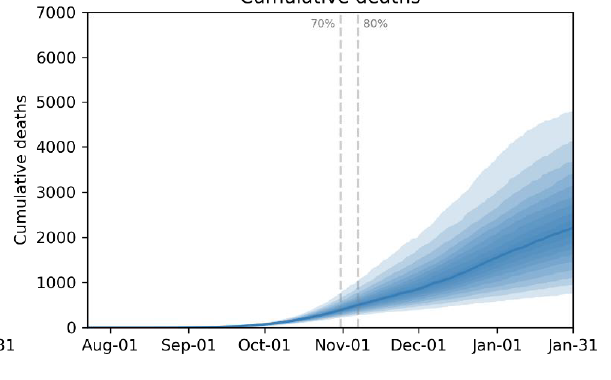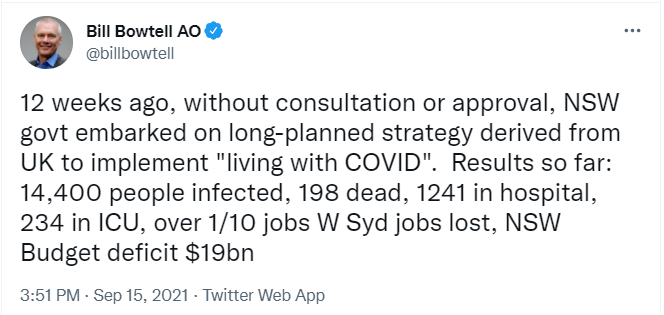
Today we’ll look around the world at countries which have had success at suppressing covid, the delta strain in particular, and see what lessons there might be for Australia.
Thread.
1/🧵
#COVID19Vic #roadmap #CovidVictoria #COVID19nsw
Thread.
1/🧵
#COVID19Vic #roadmap #CovidVictoria #COVID19nsw
This thread follows two previous threads on why the UK, and Israel/Alberta, are poor parallels to Australia’s covid situation.
2/🧵
2/🧵
https://twitter.com/MichaelSFuhrer/status/1438276220311912448
Thread on Israel and Alberta is here.
3/🧵
3/🧵
https://twitter.com/MichaelSFuhrer/status/1438665247515021315
First, let’s zoom out and look at the world situation as a whole.
World covid cases have gone through five major peaks since the pandemic began.
4/🧵
World covid cases have gone through five major peaks since the pandemic began.
4/🧵

The peaks are roughly:
- initial outbreaks in March 2020
- mid-2020 wave (winter in S. America, and summer in the air-conditioning belt of N. America)
- winter 2020-2021 in N. Hemisphere
- delta in India,
- variants (largely delta except S. America) in rest of world.
5/🧵
- initial outbreaks in March 2020
- mid-2020 wave (winter in S. America, and summer in the air-conditioning belt of N. America)
- winter 2020-2021 in N. Hemisphere
- delta in India,
- variants (largely delta except S. America) in rest of world.
5/🧵
The five waves can be seen more clearly in deaths over time, however daily deaths have not yet peaked in N. America and Europe.
6/🧵
6/🧵

An aside: Deaths may be a better proxy to measure the prevalence of covid compared to cases, as testing and reporting are more consistent. Later in this thread I will use deaths to compare the prevalence of covid across countries for this reason.
7/🧵
7/🧵
Returning to cases for a moment. Covid is on the decline on every continent in the world except Australia. The majority of countries are seeing declining cases right now. All continents except S. America are currently dominated overwhelmingly by the delta variant.
8/🧵
8/🧵

The worldwide decline in cases might surprise, especially given delta.
How has the world controlled delta? Unfortunately, in most cases through infection-acquired immunity (often in combination with vax immunity); there simply are few susceptible people left to infect.
9/🧵
How has the world controlled delta? Unfortunately, in most cases through infection-acquired immunity (often in combination with vax immunity); there simply are few susceptible people left to infect.
9/🧵
Good/bad news: May have seen the last wave of covid, and lack of large susceptible populations removes the evolutionary pressure towards higher transmissibility.
But, infections also confer severe disease and death. (And evolutionary pressure will turn to immune escape.)
10/🧵
But, infections also confer severe disease and death. (And evolutionary pressure will turn to immune escape.)
10/🧵
We’re most interested in learning how to avoid infections altogether. So I want to examine countries with low incidence of covid (as measured in low deaths).
11/🧵
11/🧵
I want to avoid cherry-picking. So I looked at all developed countries (HDI ≥ 0.8). I also reference a few other countries outside this – generally large, well-known countries with moderate HDI. If I say “there are no examples”, I mean, no countries with HDI ≥ 0.8.
12/🧵
12/🧵
Data generally come from ourworldindata.org, and the Oxford Covid-19 Government Response Tracker (OxCGRT; bsg.ox.ac.uk/research/resea…).
Cases/M and deaths/M mean cases or deaths per million population.
13/🧵
Cases/M and deaths/M mean cases or deaths per million population.
13/🧵
There 69 countries with HDI ≥ 0.8.
Of these, 38 countries have seen >1,000 deaths/M (high), and 13 countries 500-1000 deaths/M (moderate), 9 countries 100-500 deaths/M (low), and 9 countries 0-100 deaths/M (very low).
14/🧵
Of these, 38 countries have seen >1,000 deaths/M (high), and 13 countries 500-1000 deaths/M (moderate), 9 countries 100-500 deaths/M (low), and 9 countries 0-100 deaths/M (very low).
14/🧵
9 low-death countries*: Barbados, Denmark, Finland, Japan, Norway, Qatar, Saudi Arabia, UAE.
9 very-low-death countries: Australia, Brunei, Hong Kong, Iceland, Mauritius, New Zealand, Palau, Singapore, South Korea.
*I skip Belarus due to suspicions of underreporting
15/🧵
9 very-low-death countries: Australia, Brunei, Hong Kong, Iceland, Mauritius, New Zealand, Palau, Singapore, South Korea.
*I skip Belarus due to suspicions of underreporting
15/🧵
We can divide the countries qualitatively into groups.
➡️Countries that have eliminated or near-eliminated covid:
Hong Kong, New Zealand.
Also included would be parts of Australia, as well as China, Taiwan, and parts of Vietnam.
16/🧵
➡️Countries that have eliminated or near-eliminated covid:
Hong Kong, New Zealand.
Also included would be parts of Australia, as well as China, Taiwan, and parts of Vietnam.
16/🧵
➡️Countries formerly eliminated or near-eliminated covid, now w/epidemic covid:
Barbados, Brunei, Mauritius.
Also includes Thailand, parts of Oz, parts of Vietnam, Cambodia
With exception of Mauritius, these countries are suppressing delta outbreaks with lockdowns.
17/🧵
Barbados, Brunei, Mauritius.
Also includes Thailand, parts of Oz, parts of Vietnam, Cambodia
With exception of Mauritius, these countries are suppressing delta outbreaks with lockdowns.
17/🧵
➡️Countries formerly eliminated covid, now have low incidence of delta:
Singapore.
➡️Countries eliminated widespread delta:
None.
➡️Low-covid countries that have suppressed delta:
Denmark, Finland, Iceland, Japan, Norway, Qatar, Saudi Arabia, UAE.
18/🧵
Singapore.
➡️Countries eliminated widespread delta:
None.
➡️Low-covid countries that have suppressed delta:
Denmark, Finland, Iceland, Japan, Norway, Qatar, Saudi Arabia, UAE.
18/🧵
What have we learned?
1) There are few remaining zero-covid countries (China, Hong Kong, Taiwan). Several former zero-covid countries that have had delta outbreaks have failed at eliminating (e.g. Thailand, Vietnam, Australia).
1) There are few remaining zero-covid countries (China, Hong Kong, Taiwan). Several former zero-covid countries that have had delta outbreaks have failed at eliminating (e.g. Thailand, Vietnam, Australia).
NZ shows the difficulty of eliminating after 33 days in one of the world’s strictest lockdown.
Several countries have concluded elimination is not a viable strategy with delta and vax. For example here is the advice that formed NZ’s strategy:
covid19.govt.nz/assets/reports…
19/🧵
Several countries have concluded elimination is not a viable strategy with delta and vax. For example here is the advice that formed NZ’s strategy:
covid19.govt.nz/assets/reports…
19/🧵
What have we learned?
2) There are also few disasters. No low- or very-low-covid countries have failed w/delta & become medium- or high-covid. Of countries that have faired poorly with covid (high/medium deaths), in all cases the vast bulk of deaths occurred pre-delta.
20/🧵
2) There are also few disasters. No low- or very-low-covid countries have failed w/delta & become medium- or high-covid. Of countries that have faired poorly with covid (high/medium deaths), in all cases the vast bulk of deaths occurred pre-delta.
20/🧵
In Israel and Canada, faring among the worst with delta, <20% of deaths have occurred since delta arrived.
21/🧵
21/🧵
Partly the lack of disasters is due to vaccination. If Oz can reach high vax (80-90% of 12) 1/low cases, then simple estimates (e.g. using this paper and assuming that a baseline TP of 3.6) indicate at worst Oz could see low (100-500/M) deaths.
osf.io/6j4rd/
22/🧵
osf.io/6j4rd/
22/🧵
What have we learned?
3) Covid success is not well correlated with lockdowns! Very few of our low- and very-low-covid countries ever imposed lockdowns, as defined as a mandatory stay-at-home order with exceptions for essential reasons.
23/🧵
3) Covid success is not well correlated with lockdowns! Very few of our low- and very-low-covid countries ever imposed lockdowns, as defined as a mandatory stay-at-home order with exceptions for essential reasons.
23/🧵
Among the countries which never locked down even with delta outbreaks: Denmark, Finland, Hong Kong, Iceland, Japan, Norway, Saudi Arabia, Singapore, South Korea, UAE.
Cases are low and either flat or decreasing in almost all, with the exception of Singapore.
24/🧵
Cases are low and either flat or decreasing in almost all, with the exception of Singapore.
24/🧵

Correlation doesn’t mean causation, and I don’t mean to suggest that lockdowns cause higher cases! But, not only does it seem possible to suppress delta w/o lockdown, it seems to be the norm, at least in countries which have otherwise been successful in suppressing covid.
25/🧵
25/🧵
Perhaps these successful countries are all vaccination success stories. Indeed, some (Iceland, UAE, SG, DK) are among the highest vaxxed countries in the world. All have higher vaccination than Australia. But, some are still in the middle of their vaccination rollouts.
26/🧵
26/🧵

(Note vaccination in last tweet is expressed here as a percentage of total population; Australian targets of 70/80% of 16+ population are roughly 56/64% of total population.)
27/🧵
27/🧵
Moreover, many countries relaxed restrictions well before the arrival of delta and at very low vaccination rates, and never re-imposed restrictions.
28/🧵
28/🧵
Denmark, for example, lifted restrictions in steps in April-May 2021 when only 7-20% of the population were vaxxed.
DK’s cases were 80% delta on 12 Jul, with 41.2% vaccinated.
DK never re-imposed restrictions, lifted all restrictions on 10 Sept.
thelocal.dk/20210323/denma…
29/🧵
DK’s cases were 80% delta on 12 Jul, with 41.2% vaccinated.
DK never re-imposed restrictions, lifted all restrictions on 10 Sept.
thelocal.dk/20210323/denma…
29/🧵
So far, DK has 14 deaths/M from delta (NSW has had 29 deaths/M from delta).
Norway, Finland, Japan, Iceland, South Korea, Singpore similar. None locked down for delta, all have low cases flat or decreasing. All had low deaths from delta (<15/M except Japan with 60/M).
30/🧵
Norway, Finland, Japan, Iceland, South Korea, Singpore similar. None locked down for delta, all have low cases flat or decreasing. All had low deaths from delta (<15/M except Japan with 60/M).
30/🧵
We have come to believe in Australia that our success is *only* due to lockdowns, and without lockdowns, we'd be like US/UK.
But successful low-covid countries which have controlled delta have not relied on lockdown, and all were able to keep cases/deaths low.
31/🧵
But successful low-covid countries which have controlled delta have not relied on lockdown, and all were able to keep cases/deaths low.
31/🧵
Maybe the future is not so bleak as we think. I am optimistic. Other countries show it can be done.
Australia is a smart country. We've been successful in the elimination era, we'll be successful in the post-elimination era.
32/32🧵
Australia is a smart country. We've been successful in the elimination era, we'll be successful in the post-elimination era.
32/32🧵
• • •
Missing some Tweet in this thread? You can try to
force a refresh








